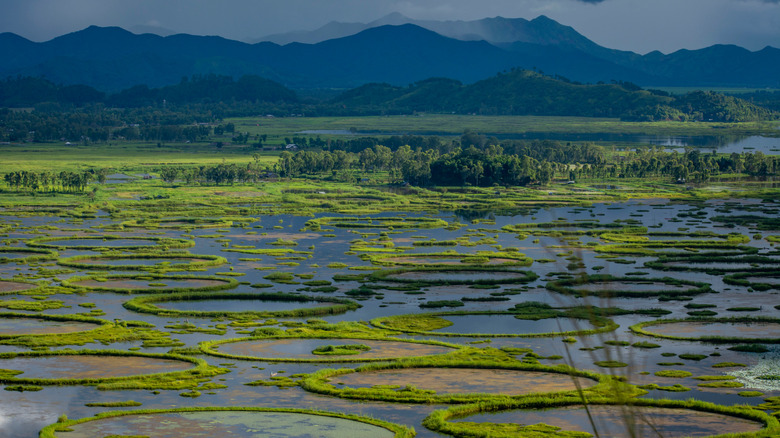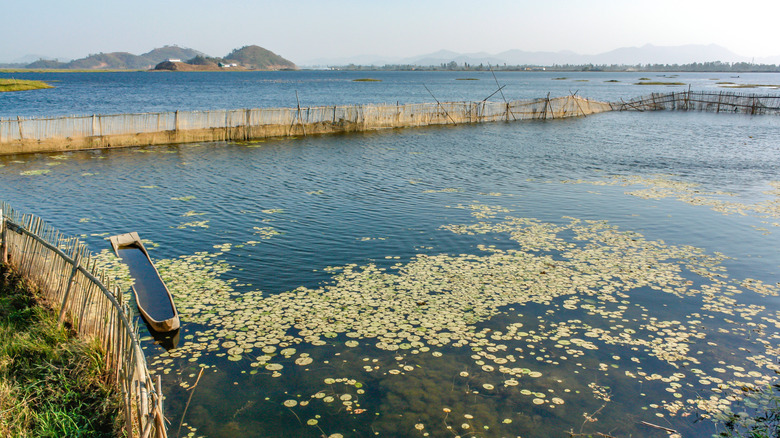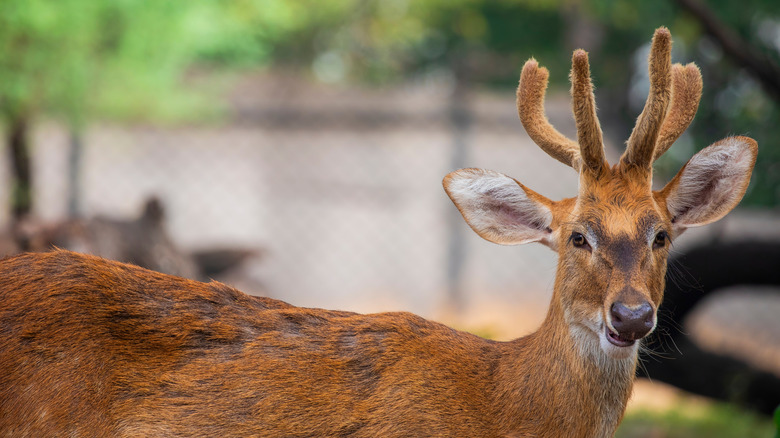Rick Steves’ favorite country isn’t even in Europe — many are surprised to discover it’s India. Whether or not you’re shocked by this revelation, digital nomads and wanderlusts get it. Between Jaipur’s artisanal crafts, luxe resorts, and palaces and Alappuzha’s scenic waterways, beaches, and lagoons, India knows how to leave an impression — and most importantly, disrupt stereotypes about the country. And as striking as its man-made landmarks are, from the impressive Taj Mahal in Agra to the royal Mysore Palace in Karnataka, it’s the natural wonders that truly take our breath away. Tucked in the northeast corner of the country are two freshwater lakes separated by a floating grove of mystery. Keibul Lamjao National Park, situated between Loktak and Pumlen Pat Lakes, is a unique wetland reserve spanning 15.4 square miles. Not only is this the last natural habitat of the Manipur brow-antlered deer, but it’s also the only floating national park in the world.
So, what exactly does a “floating national park” entail? Keibul Lamjao is a buffer between Loktak and Pumlem — an in-between water body — that’s neither a marsh nor a lake. The entire surface is covered in phumdis, which consist of soil and decaying matter large and thick enough to withstand the weight and force of a house. On top of supporting robust structures, the buoyant biomass’s vegetation yields food for the wildlife.
Besides its ecological significance, Keibul Lamjao National Park and the surrounding area play a major role in the lives of the people living in the region. From recreational activities such as fishing to providing hydroelectricity and irrigation to the communities, the park’s biodiversity has consistently been the center of the local culture and economy. With so much ethereal beauty to offer, you can’t miss this underrated hidden gem in India.
How to get to Keibul Lamjao National Park
Don’t be fooled by India’s size — it’s the seventh largest country in the world, meaning you can’t just hop in your car and drive from Mumbai to the national park (or you can, but prepare for a multi-day adventure). You have to carefully plan your trip so you don’t end up on the road for too long. Chances are you’re going to have two, maybe even three layovers to fly into the closest airport. From New York, the average journey takes anywhere between 25 and 35 hours, with one layover in New Delhi and another in Kolkata before landing in Bir Tikendrajit International Airport (IMF). The drive from the airport is approximately one hour and 20 minutes. Keibul Lamjao National Park is quite far from other major cities in India, such as Jaipur, New Delhi, Hyderabad, and Mumbai, so air travel is your best bet. No matter where you’re coming from, you have to be ready for the long road ahead.
Considering you’re going to great lengths to see Keibul Lamjao National Park, you want to make sure to travel at the right time to witness it at its peak. Aim to visit the national park between October and March, when the weather is cool and dry and the phumdis are more noticeable. During these months, the water levels also tend to be high, making it ideal to explore the area on a boat. As for what time to visit, it’s best to arrive early in the morning, starting at 6:00 a.m., for better opportunities to spot the endangered Sangai deer.




